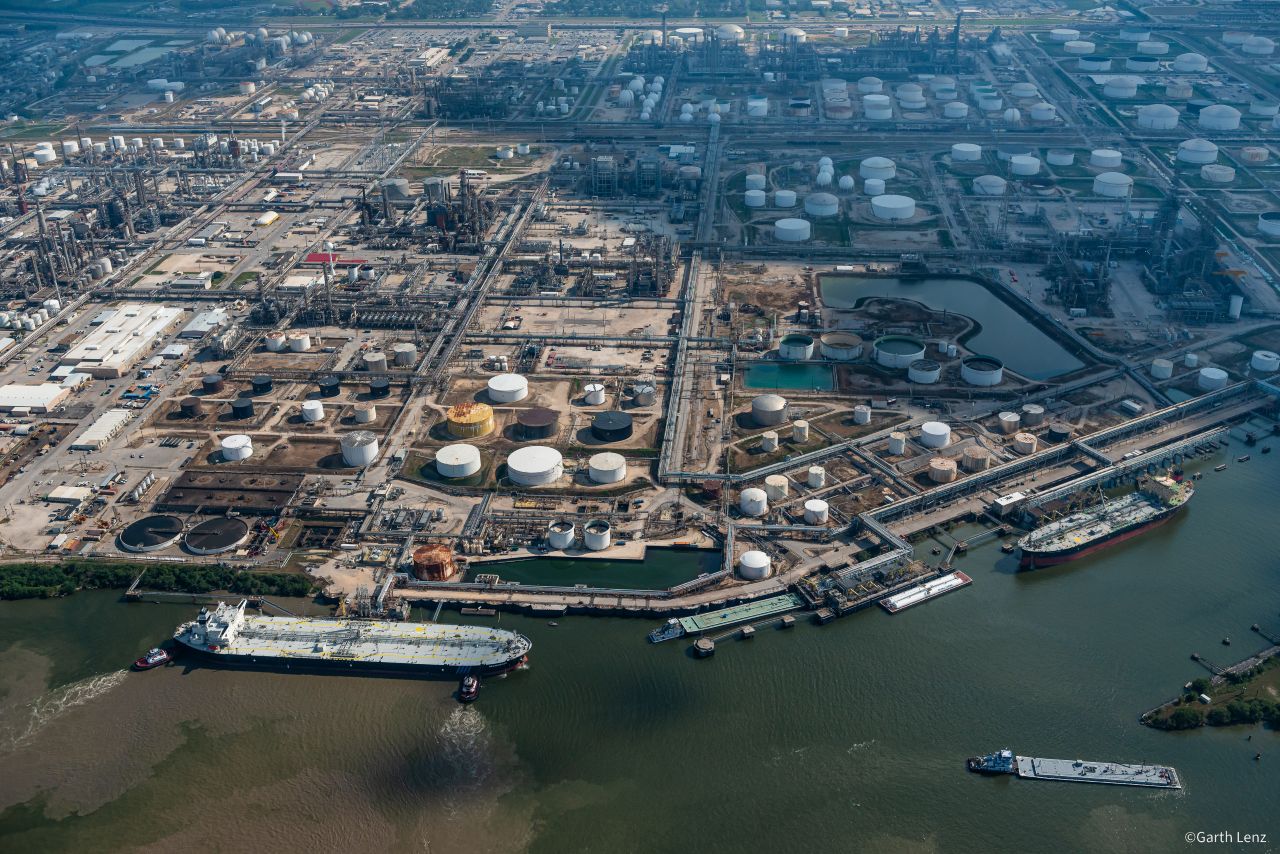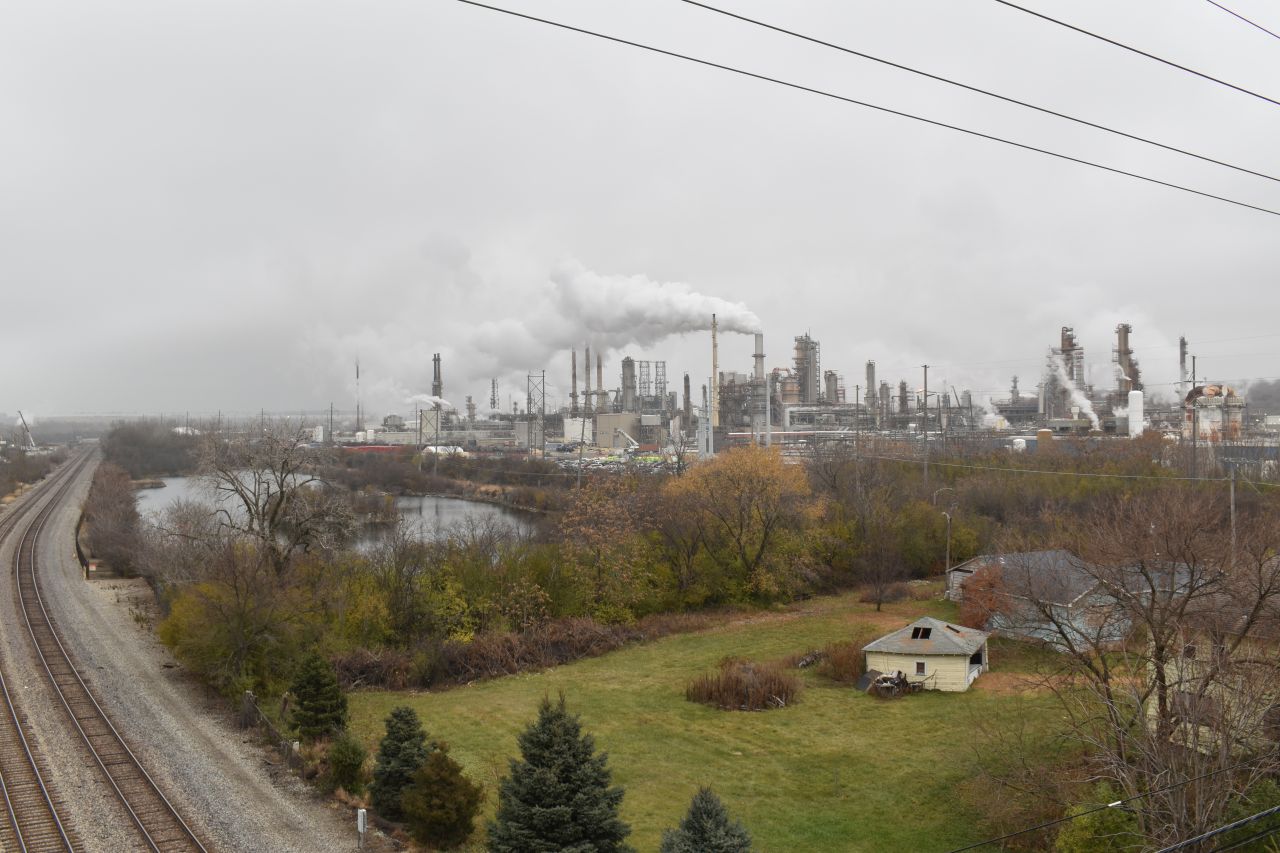Why the EPA says new oil and gas regulations will cut methane emissions 87%

WTG Gas Processing’s Crow Compressor Station in West Texas doesn’t look remarkable -- just a collection of engines, pipes, and tanks laid out on a graded strip carved out of empty fields under the wide-open sky. A handful of nearby pumpjacks draw oil up from below the parched earth.
But through the lens of an infrared camera, the plant’s significance becomes clearer. Multiple times over the past two years, environmental organizations have captured the station spewing vast plumes of methane, a potent greenhouse gas whose regulation is key to addressing climate changes. With a global warming potential 80 times that of carbon dioxide over the first 20 years after it reaches the atmosphere, methane is responsible for roughly a third of warming already observed since pre-industrial times.
Earlier this month, the U.S. announced sweeping new restrictions on methane from the oil and gas sector. The rule covers not only new sources built after it takes effect, but many existing sources that have been spewing methane into the atmosphere for years.
“The United States is once again a global leader in confronting the climate crisis, and we must lead by example when it comes to tackling methane pollution – one of the biggest drivers of climate change,” EPA Administrator Michael Regan said in Nov. 11 statement announcing the new rules.
The measures are meant to slash methane emissions by 87 percent below 2005 levels by 2030. The measures would also reduce volatile organic compounds, which can form smog and cause chronic health issues. The agency says the proposal will yield $3.1 to $3.2 billion per year in net economic benefits because of avoided climate disruption.
EPA is accepting comments on the proposals until Feb. 13, 2023. Instructions for how to comment can be found here.
Oil and natural gas systems are the largest source of methane in the U.S., responsible for 32 percent of emissions, according to the EPA. In places like West Texas, where drilling pads, gas plants, pipeline terminals, and compressor stations dot the landscape, a small facility such as the Crow station doesn’t draw much scrutiny. The compressor is a small part of a vast oil and gas field infrastructure network that straddles western Texas and eastern New Mexico.
In April 2022, a staff member with Earthworks, an environmental nonprofit, filmed the Crow station with an infrared camera, capturing video that shows clouds of vapor wafting from the plant. On Oct. 4, 2021, a passing aircraft captured an image a plume rising over the facility. From above, the image showed methane at levels sometimes exceeding 2,700 kilograms per hour, according to Carbon Mapper.
That’s far above the 100-kilogram-per-hour threshold labeled as “super-emitters” in the EPA’s latest proposal. In reality, even a plume of this size has become routine. Carbon Mapper’s data show more than 4,000 methane plumes that could qualify as super-emitters photographed over the Permian Basin between September 2019 and November 2022.
Super-emitters aren’t unique to the Permian Basin. Earlier this month, the natural gas storage well in western Pennsylvania that lost 100 million cubic feet of gas per day as operating company Equitrans Midstream worked from Nov. 8-21 to shut it down. In 2018 in Ohio, a well blowout lasting 20 days caused the emission of an average 120 metric tons per hour, twice the hourly rate of the Aliso Canyon gas leak in California in 2015, reported then to be the worst such event in U.S. history.


Super-emitter program, equipment upgrades, more monitoring
A central part of the EPA’s super-emitter program requires facility operators to fix their equipment after receiving notice from regulators or EPA-approved third parties. Meant to spur action quickly, the rule would require operators to analyze the problem within five days and fix the problem within 10 days.
These third parties could be environmental organizations, academic institutions, or qualified contractors. However, they would have to be “certified by the EPA as having appropriate experience and expertise” and use vetted equipment and methods.
The proposal focuses on routine sources of methane emissions. After a previous attempt to regulate oilfield methane in 2016 was rolled back by the Trump Administration in 2020, the agency’s latest rules would for the first time tighten methane standards for both new and existing equipment.
For example, the EPA is tightening rules on flaring, the practice of burning off waste gas. To flare gas, well owners would have to certify that a nearby pipeline to harvest and sell the natural gas is too far away and that other potentially productive uses of the gas aren’t feasible.
The proposal also deals with unlit flares, which are more destructive because they vent methane directly to the atmosphere. The EPA is proposing requiring new monitoring devices to ensure that pilot lights meant to keep the flares burning are never snuffed out.
The EPA is also cracking down on pneumatic equipment that emits puffs of methane as part of its design. Under the new proposal, pneumatic controllers and pumps would have to emit zero methane and volatile organic compounds. If finalized, the rule would require companies to replace old equipment that doesn’t meet the standard.
The proposal also includes new regulations on dry seal centrifugal compressors, sources of methane emissions that are currently unregulated. These machines that cram natural gas into pipelines use high-pressure gas to seal the compressor.
The EPA’s rule would also subject more sites to routine monitoring requirements. No longer would sites that only have wellheads, the stacks of valves where oil and gas wells reach the surface, be exempt from monitoring. The EPA would also base monitoring requirements on the amount and type of equipment used at the site, rather than based on the industry’s self-reported emissions.
One February letter to the EPA from a group of Permian Basin residents decried any reliance on self-reporting, stating that the agency “must embrace regulation that can be enforced in a routine way.”
“We live our lives among the oil and gas industry and because of that we know regulation that relies upon self-reporting from the industry is subpar at best,” the letter states. “If there's a loophole for industry to exploit, they will find it.”
The Biden Administration's push on methane
The EPA’s oil and gas proposal is the Biden Administration’s main tool in combatting methane, though the Inflation Reduction Act signed into law in August will also begin assessing a fee of $900 per metric ton of methane starting in 2024, ramping up to $1,500 per ton after two years.
Last week, the Bureau of Land Management also rolled out new regulations regarding methane emissions from oil and gas drilling on federal lands. The rules would require monthly limits on flaring, leak detection plans, the use of “low-bleed” pneumatic equipment and vapor recovery for storage tanks, and other requirements.
The oil and gas industry has been divided in its response to new methane regulations. Some trade associations and large companies have accepted them as part of a global effort by governments, investors, and financial institutions to meet the climate goals set in the 2017 Paris Agreement.
In a January letter to the EPA after the agency released an initial proposal in 2021, Marnie Funk, a senior advisor with Shell Oil Company, wrote that the company “strongly supports EPA’s efforts to regulate methane emissions from all onshore segments within the crude oil and natural gas source category, including onshore production, processing, transmission, and storage segments of the source category.”
The American Petroleum Institute also wrote in its own January comment letter that it “supports the cost-effective direct regulation of methane from new and existing sources across the supply chain, and directionally supports the EPA proposal to reduce VOC and methane emissions.”
However, smaller independent production companies and royalty owners have more strongly protested methane regulations. Of particular concern were the EPA’s plan to regulate methane emissions from older, low-producing wells, often called marginal or “stripper” wells.
“...There are many communities that rely exclusively on gas supplied by low production/marginal wells located geographically close to their homes and would not be served if certain low production wells are shut in because the small, local oil and natural gas company cannot afford to comply with the regulations in the proposal,” states one letter from more than 20 oil and gas producer associations.
However, a study published in Nature Communications earlier this year found that low-producing wells are responsible for half of all methane emission from well sites in the U.S., despite accounting for only 6 percent of total production.
“Our work suggests that achieving significant reductions in [oil and gas methane] emissions will require mitigation of emissions from low production well sites,” the report’s authors state.















